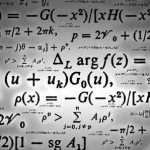Introduction
Many engineering analysis and design problems are far too complex to be solved without the aid of computers. However, the use of computers in problem solving has made it increasingly necessary for users to be highly skilled in (practical) mathematical analysis. There are a number of reasons for this. A few are as follows.
For one thing, computers represent data to finite precision. Irrational numbers such as π or √ 2 do not have an exact representation on a digital computer (with the possible exception of methods based on symbolic computing). Additionally, when arithmetic is performed, errors occur as a result of rounding (e.g., the truncation of the product of two n-bit numbers, which might be 2n bits long, back down to n bits). Numbers have a limited dynamic range; we might get overflow or underflow in a computation. These are examples of finite-precision arithmetic effects. Beyond this, computational methods frequently have sources of error independent of these. For example, an infinite series must be truncated if it is to be evaluated on a computer. The truncation error is something “additional” to errors from finite-precision arithmetic effects. In all cases, the sources (and sizes) of error in a computation must be known and understood in order to make sensible claims about the accuracy of a computer-generated solution to a problem.
Many methods are “iterative.” Accuracy of the result depends on how many iterations are performed. It is possible that a given method might be very slow, requiring many iterations before achieving acceptable accuracy. This could involve much computer runtime. The obvious solution of using a faster computer is usually unacceptable. A better approach is to use mathematical analysis to understand why a method is slow, and so to devise methods of speeding it up. Thus, an important feature of analysis applied to computational methods is that of assessing how much in the way of computing resources is needed by a given method.
A given computational method will make demands on computer memory, operations count (the number of arithmetic operations, function evaluations, data transfers, etc.), number of bits in a computer word, and so on. A given problem almost always has many possible alternative solutions. Other than accuracy and computer resource issues, ease of implementation is also relevant. This is a human labor issue. Some methods may be easier to implement on a given set of computing resources than others. This would have an impact on software/hardware development time, and hence on system cost. Again, mathematical analysis is useful in deciding on the relative ease of implementation of competing solution methods.
The subject of numerical computing is truly vast. Methods are required to handle an immense range of problems, such as solution of differential equations (ordinary or partial), integration, solution of equations and systems of equations (linear or nonlinear), approximation of functions, and optimization. These problem types appear to be radically different from each other. In some sense the differences between them are true, but there are means to achieve some unity of approach in understanding them.
The branch of mathematics that (perhaps) gives the greatest amount of unity is sometimes called functional analysis. We shall employ ideas from this subject throughout. However, our usage of these ideas is not truly rigorous; for example, we completely avoid topology, and measure theory. Therefore, we tend to follow simplified treatments of the subject such as Kreyszig [1], and then only those ideas that are immediately relevant to us. The reader is assumed to be very comfortable with elementary linear algebra, and calculus. The reader must also be comfortable with complex number arithmetic (see Appendix 1.A now for a review if necessary). Some knowledge of electric circuit analysis is presumed since this will provide a source of applications examples later. (But application examples will also be drawn from other sources.) Some knowledge of ordinary differential equations is also assumed.
It is worth noting that an understanding of functional analysis is a tremendous aid to understanding other subjects such as quantum physics, probability theory and random processes, digital communications system analysis and design, digital control systems analysis and design, digital signal processing, fuzzy systems, neural networks, computer hardware design, and optimal design of systems. Many of the ideas presented in this book are also intended to support these subjects.


